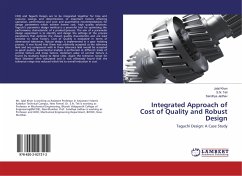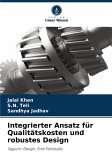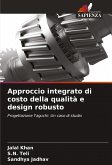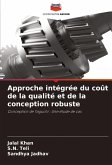COQ and Taguchi Design are to be integrated together for time and resource savings and determination of important factors affecting operation, performance and cost; and quantitative recommendations for design parameters which achieve lowest cost, high quality solutions. Taguchi's parameter design method is a powerful tool for optimizing the performance characteristic of a product/process. The aim of a parameter design experiment is to identify and design the settings of the process parameters that optimize the chosen quality characteristic and are least sensitive to noise factors. Cost of Quality is evaluated in terms of dimensional tolerances. Robust design is implemented in a gear hobbing process. It was found that these was arbitrarily accepted as the tolerance limit and any component with in these tolerance limit would be accepted as good quality. Experimental analysis is performed at different levels of control factors and noise factors. Optimum value of control factors is found by studying Signal to Noise ratio. Again the tolerance range for Root Diameter were calculated and it was effectively found that the tolerance range was reduced which led to overall reduction in cost.
Bitte wählen Sie Ihr Anliegen aus.
Rechnungen
Retourenschein anfordern
Bestellstatus
Storno








